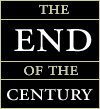 |
|
| | Thursday, December 23 | ||||||
| 10. Tom Osborne goes for two It's the final minute of the 1984 Orange Bowl between Nebraska and Miami. The No. 1-ranked Cornhuskers scored to cut their deficit to 31-30. All Osborne had to do was kick the extra point, force a tie and win his first national championship. Instead, he goes for two. It failed and Miami had the shocking upset. But Osborne deserves praise for making the correct -- and gutsy -- decision. 9. Connie Mack starts Howard Ehmke Great managers and coaches are often successful because they are not afraid to fail. Case in point: Game 1 of the 1929 World Series. Connie Mack's Philadelphia Athletics had 20-game winners Lefty Grove and George Earnshaw, but Mack inexplicably started 35-year-old veteran Howard Ehmke, who had won just seven games that year. But Ehmke spent several weeks personally scouting the Chicago Cubs to prepare for his start and fanned 15 batters in a 3-1 victory. The A's won the Series in five games.
Rookie third baseman Cal Ripken was having a fine season with the Baltimore Orioles in 1982 (he would win the Rookie of the Year Award) when manager Earl Weaver moved him to shortstop midway through the season. Nobody believed it would work; Ripken was too big and not agile enough to play shortstop said conventional wisdom. But Ripken proved to be an outstanding defensive player, helping pave the way for today's generation of bigger, offensive-minded shortstops like Alex Rodriguez and Nomar Garciaparra. 7. Bart Starr's quarterback sneak Sometimes, the best moves are the moves not made. In the famous ending to the "Ice Bowl" game, Green Bay had one final play from the goal line, trailing Dallas 17-14 in the NFL championship. The Packers had twice been stuffed, but Lombardi wanted to call a handoff to fullback Chuck Mercein. Quarterback Bart Starr convinced Lombardi a QB sneak would do the trick. Lombardi listened to him. Starr scored and Green Bay went on to win Super Bowl II. 6. Notre Dame "invents" the forward pass Notre Dame was an obscure little school from the Midwest when it traveled eastward to face mighty Army in 1913. While the forward pass had been legalized in 1906, it was a play rarely used in college football. But Irish coach Jesse Harper, quarterback Gus Dorais and end Knute Rockne had developed a wide-open offense the likes never seen on the East Coast. Dorais threw for an amazing 243 yards as Notre Dame romped 31-13. The forward pass was here to stay. 5. Put the coach in Lester Patrick was coaching the New York Rangers in the 1928 Stanley Cup Finals against the Montreal Maroons. The Maroons won the first game and Rangers goalie Lorne Chabot was knocked unconscious in Game 2 when he was hit in the face with a puck. NHL teams dressed few players back then and Patrick hadn't dressed either of his backup goalies. Patrick, 44 years old and with little goaltending experience, inserted himself into the game. The Rangers won 2-1 in overtime and went on to win the Cup. 4. Mayo Smith plays Mickey Stanley at shortstop Detroit Tigers manager Mayo Smith had four good outfielders in 1968 -- Willie Horton, Jim Northrup, Al Kaline and Mickey Stanley. Due to injuries, he had been able to play them regularly during the season, but by September all were healthy. With the AL pennant locked up, how could Smith keep his four stars happy? It appeared somebody would be the odd man out in the World Series. Well, Tigers shortstop Ray Oyler hit .135 that year, so in the final week of the season, Smith experimented with Stanley, his center fielder, at shortstop. In the World Series, Stanley started all seven games there and played errorless ball; Northrup delivered the big hit in Game 7 and the Tigers won it all. It was an unconventional and risky move that paid off. 3. A Magic-al decision It's Game 6 of the 1980 NBA Finals between the Los Angeles Lakers and Philadelphia 76ers. Lakers coach Paul Westhead has a problem -- Kareem Abdul-Jabbar had sprained his ankle in Game 5, putting him on the sidelines. Who plays center? Rookie point guard Magic Johnson moves to the paint and collects 42 points, 15 rebounds and seven assists as the Lakers wrap up the title. 2. Dean Smith calls on a freshman In the waning moments of the 1982 NCAA title game between North Carolina and Georgetown, the Tar Heels trailed 62-61. Dean Smith was looking for his first NCAA championship and he had All-American James Worthy or Sam Perkins available to take the shot. Instead, he diagrammed a play for freshman Michael Jordan, who nailed winning the basket from the corner with 16 seconds left. A legend was born. 1. Ed Barrow moves Babe Ruth to the outfield If pitching is 75 percent of baseball, why was the best left-hander in the American League turned into an outfielder? Because it's not. Ruth won 23 games in 1916 and 24 in 1917 but Red Sox manager Ed Barrow realized Ruth would be even more valuable as a slugger. He set a record with 29 home runs in 1919 and after he was sold to the Yankees in 1920, Miller Huggins ended his pitching days for good. | ALSO SEE Kurkjian: Ripken, the shortstop Message Board  | ||||||
